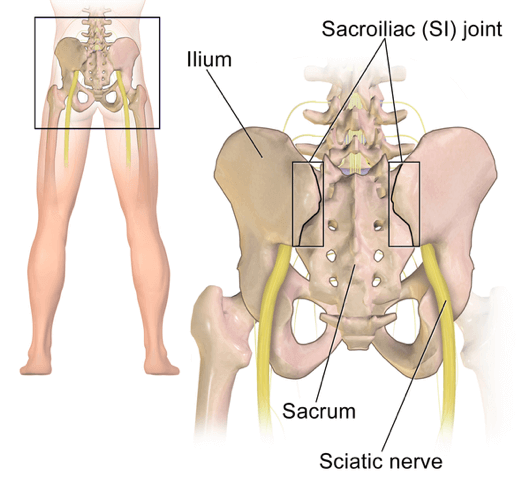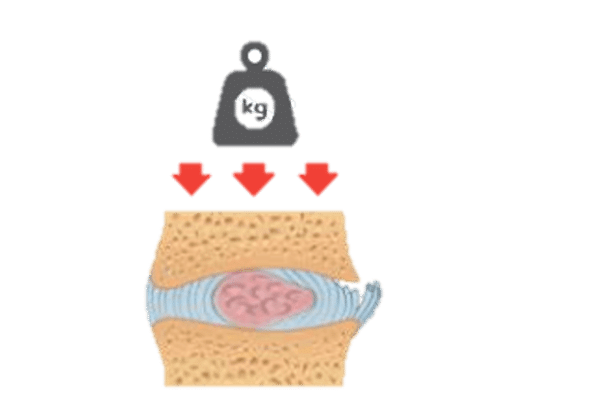Request Appointment
Enter your details and we will be in touch with you shortly;
Or call 08655885566 between 8 am and 8 pm.

Pain around the sacroiliac joint due to abnormal movement at the joint

It involves 15-30% of lower back pain caused by inflammation of Sacroiliac Joint. Unnatural movement of the Sacroiliac Joint causes radiating pain in the legs.
It causes the typical Sciatica type radiating pain in the lower limbs. Other symptoms are like,
 professional diagnosis required
professional diagnosis required Chronic, can last for years
Chronic, can last for years Treatable with 8 weeks of QI Spine Therapy
Treatable with 8 weeks of QI Spine TherapyHypermobility (too much) and Hypomobility (too little), both can cause the condition. Some of the factors that are responsible for unnatural movement of the Sacroiliac Joint are,
Detailed Spine Function test identifies the root cause of the problem, which can be weak muscles or a ligament or a scar tissue. It isolates the affected area so that targeted treatment can be applied.
 professional diagnosis required
professional diagnosis required Chronic, can last for years
Chronic, can last for years Treatable with 4 weeks of QI Spine Therapy
Treatable with 4 weeks of QI Spine TherapyThere is no single approach to treat the SI Joint pain. It is based on the symptoms and severity of the condition. Common treatments involve –
 professional diagnosis required
professional diagnosis required Chronic, can last for years
Chronic, can last for years Treatable with 4 weeks of QI Spine Therapy
Treatable with 4 weeks of QI Spine TherapyThere is no single approach to treat the SI Joint pain. It is based on the symptoms and severity of the condition. Common treatments involve –
 professional diagnosis required
professional diagnosis required Chronic, can last for years
Chronic, can last for years Treatable with 4 weeks of QI Spine Therapy
Treatable with 4 weeks of QI Spine Therapy


Have a question?
Ask our spine specialists
Who is a QI Spine Specialist?
A QI Spine Specialist is a medical expert with

Dr. Nidhi Sanghvi Shah

Dr. Manisha Moorjani

Dr. Shital Gaikwad

Dr. Richa Bhatia
9000 hours
of specialisation in treating back and neck conditions
32 hours
of spine physiotherapy specialisation methods in McKenzie concepts, Kinetic control, Neurodynamic solutions, Mulligan’s concepts
500 hours
and 6 months of QI Spine specialisation courses